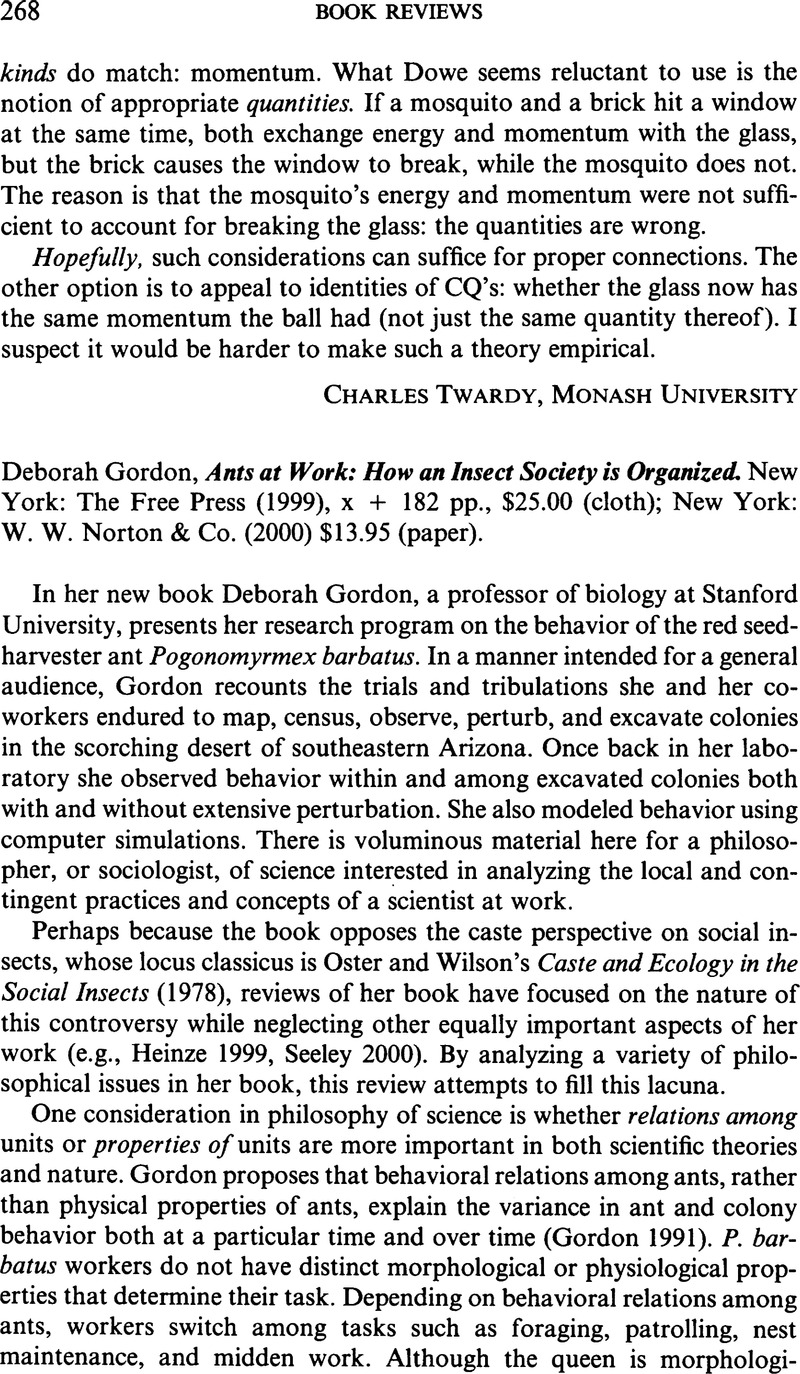Crossref Citations
This article has been cited by the following publications. This list is generated based on data provided by Crossref.
Winther, Rasmus G.
2001.
Varieties of modules: Kinds, levels, origins, and behaviors.
Journal of Experimental Zoology,
Vol. 291,
Issue. 2,
p.
116.
Ketcham, Ryan
2019.
Task Allocation and the Logic of Research Questions: How Ants Challenge Human Sociobiology.
Biological Theory,
Vol. 14,
Issue. 1,
p.
52.





